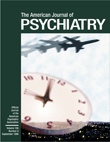Written by a psychiatrist and completed by his psychologist wife after he died in 1995, this book aims to demonstrate that placebos have had a central role in medicine’s past and present and will likely be key to its future. The case made for these contentions by the authors is scholarly, scientific, passionate, and likely to disturb many practitioners, including psychiatrists and psychologists.
The first several chapters are devoted to a history of the definition, use, and attitudes toward placebos from ancient times and cultures to our own era. The widespread use of such remedies as viper’s skin, bezoar stone, krebiozin, laetrile, bloodletting, and magnetism, to name but a few, as well as beliefs in untested theories such as homeopathy, iridology, Rolfing, and reflexology, lead the authors to conclude that “until recently, the history of medical treatment was essentially the history of the placebo effect.” A lengthy section devoted to Psychiatry and Other Psychotherapies reveals that mental health practitioners have been especially slow in recognizing and acknowledging the centrality of the placebo effect in their practices. Using historical evidence and a reasoned critique of the methodology of a multitude of studies in psychological therapeutics, the authors conclude that, given current evidence, psychotherapies have the characteristics of placebo treatments, including “myriad schools, the use of one therapy for many disorders, the use of many therapies for one disorder, the predominance of nonspecific effects, and the absence of proof of specific effectiveness.” Current popular psychotherapies, including cognitive therapy and interpersonal therapy, are not excluded from this critique.
The book next covers the rise of scientific approaches to therapeutics with the introduction of clinical trials in the nineteenth century. Significant refinements continued in the early 1900s, culminating in the development of the double-blind, placebo-controlled method, which was not widely used until the 1970s. The struggle to introduce scientific methodology into therapeutics, the widespread criticism and hostility to the double-blind method, and its ultimate triumph as the gold standard in evaluating new medications are thoroughly described. The reluctance and practical problems involved in introducing this method into areas apart from evaluation of medications, such as surgery and psychotherapy, are explored. Although the authors acknowledge that it is difficult to conduct double-blind, placebo-controlled studies in these fields, they do not flinch from insisting that such methods are essential for establishing the scientific credibility of the therapies offered in these fields.
A chapter is devoted to the ethical concerns regarding double-blind, placebo-controlled methods; here the authors briefly discuss how these concerns have been raised, debated, and resolved. A subsequent chapter delves cogently into the many ways the double-blind, placebo-controlled method is violated in virtually all studies. The focus of this critique is on the lack of true blinding of patients and therapists caused by differences in the appearance, taste, smell, and/or side effects between the active agent and placebo. The final chapter before the summary is devoted to the authors’ studies, which attempted to determine the factors predictive of positive and negative placebo responses. The hope of these studies was that such factors could be isolated, amplified, and used therapeutically. The authors readily admit that work in this area, including their own, is scant and not well developed and, to this point in time, not very revealing of the reasons for the effectiveness of placebos.
The authors conclude by reminding the reader that our current era does not differ in many respects from the past, given that “megavitamins, nutrition and organic foods, stress reduction, holistic medicine, and even the concept of behavioral health may be examples of recent popular placebos.” Their point is not that these remedies are ineffective but that their efficacy can be established only by using the scientific tools at our disposal, including the double-blind, placebo-controlled trial. The adherence to this principle by medical (including psychiatric) therapeutics has been vital to its development in the last quarter of the twentieth century. The future course of medicine (including psychiatry), as suggested by these authors, hinges on its continued adherence to and refinement of this principle.

